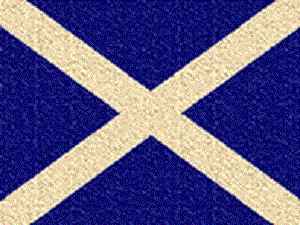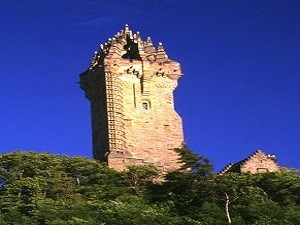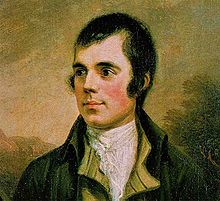The History of Scotland
A Brief summary of the History of Scotland from the first century AD to the present time
1st Century AD to the 12th Century AD
From the 1st century AD, Scotland’s first tourist’s the Romans invaded Britain and added southern Britain to their empire, as the province Britannia. However they could not subdue the fierce tribes in the north. To keep these tribes from invading Britannia, Emperor Hadrian built a massive wall across the island from sea to sea known as “Hadrians Wall”. The Romans called the land north of the wall Caledonia and they called the people Picts…from the Latin piclus, meaning “painted”–because they painted their bodies, it is not fully understood whether the Picts were also a Celtic people or the links between the Picts and the Irish Celts. Parts of Hadrian’s Wall still stand on the Scottish border. In the 5th century Celtic immigrants from Ireland, called Scots, settled north of the Clyde. The Scots were already Christians when they left Ireland. In the next century St. Columba, the first official eye witness of the Loch Ness Monster! converted the king of the Picts to Christianity. In the 9th century Kenneth MacAlpine, king of the Scots, added the Pictish kingdom to his own. In about the 10th century the land came to be known as Scotland. After the Normans conquered England in 1066, many Anglo-Saxons from England settled in the Lowlands of Scotland. Here the Scots gradually adopted English ways. Feudalism was established, and the chiefs of the clans became nobles. Towns grew, trade increased, and Scotland prospered. In the early 12th Century Loch Finlaggan on the island of Islay, was the centre of the realm of the Lords of the Isles. These MacDonald lords were descended from Somerled, a 12th century prince, and took their name from his grandson Donald. They ruled the islands and parts of the west coast of Scotland from Kintyre to Lewis, virtually independent of the control of the Scottish Crown.
Kings and Queens The Glen Coe Massacre William Wallace Robert Burns and Cutty Sark Robert the Bruce, Sir Walter Scott Clans and Nobles The Loch Ness Monster Bonnie Prince Charlie Famous Scottish Battles Scottish Castles
Kings and Queens of Scotland
In 1290 Margaret, heiress to the throne, died. Thirteen claimants contested the Crown. Edward I of England claimed the right to bestow it and made John de Baliol king. When Edward asked John for help against the French, however, John entered into an alliance with France. For 260 years Scotland held to this so-called “auld alliance” with England’s enemy. Edward crossed the border in 1296, took John de Baliol prisoner, and proclaimed himself king of Scotland. To symbolize the union he carried off the ancient Stone of Scone, on which Scottish kings had long been crowned, and placed it in Westminster Abbey where it lay beneath the coronation chair.
Kings and Queens The Glen Coe Massacre William Wallace Robert Burns and Cutty Sark Robert the Bruce, Sir Walter Scott Clans and Nobles The Loch Ness Monster Bonnie Prince Charlie Famous Scottish Battles Scottish Castles
William Wallace The “Braveheart”
The Scots rose again. Led by William Wallace “The Braveheart”, they routed the English at Stirling Bridge in 1297 and pursued them across the border. The next year Edward returned and inflicted a disastrous defeat on the Scots at Falkirk. Wallace was later captured and executed, and the English hung his head from London Bridge. This part of historic Scotland was the foundation for the film “Braveheart”.
William Wallace a common man became a true hero and warrior with little support from the Nobles. He lead a nation of men on the road to freedom and independence from English rule. Wherever possible lives were always spared and Wallace led his fellow men to great victories against all odds and was the catalyst to the later great final victory at Bannockburn in 1314, led by Scotland’s next great hero “King Robert the Bruce”
Kings and Queens The Glen Coe Massacre William Wallace Robert Burns and Cutty Sark Robert the Bruce, Sir Walter Scott Clans and Nobles The Loch Ness Monster Bonnie Prince Charlie Famous Scottish Battles Scottish Castles
King Robert the Bruce
The Scots’ spirit was still unbroken, and they soon found another great champion in Robert the Bruce. The last great battle in the war for independence was fought in 1314 at Bannockburn near Stirling Castle. There Bruce inflicted a disastrous defeat on superior English forces led by Edward II. In 1328 Edward III formally recognized Scotland’s independence. 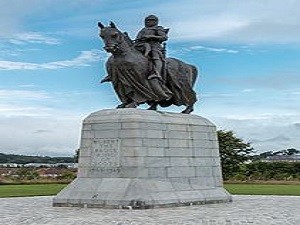
Robert the Bruce’s right-hand man was James Douglas, often overshadowed by his monarch, who might not have become king without his staunch support and talents as a military commander. “Good Sir James” died taking Bruce’s heart on a crusade to the Holy Land, a final request from his king.
Kings and Queens The Glen Coe Massacre William Wallace Robert Burns and Cutty Sark Robert the Bruce, Sir Walter Scott Clans and Nobles The Loch Ness Monster Bonnie Prince Charlie Famous Scottish Battles Scottish Castles
Scottish Clans and Nobles
In the later Middle Ages, Scotland suffered from weak kings and powerful nobles. For two centuries there was a constant struggle between the Crown and the barons. Border clashes with England also continued. James IV of Scotland married Margaret, daughter of Henry VII of England, in 1503. When Henry VIII went to war with France in 1512, however, James IV invaded England. He fell, “riddled with arrows,” at Flodden Field in the last great border battle (1513). James V died brokenhearted after his army had been slaughtered at Solway Moss (1542). The throne went to his infant daughter, Mary Stuart. Meanwhile the Protestant Reformation had swept across Europe and into England. Scotland was still a Roman Catholic country. Its young queen, Mary Stuart, was in France when John Knox returned home to Scotland from Geneva, Switzerland. Knox was a follower of John Calvin, one of the leaders of the Reformation. With fiery eloquence he spread Calvin’s Protestant doctrine. Knox and others drove Mary out. In 1560 Scotland’s parliament adopted a confession of faith drawn up by Knox and established the Church of Scotland on a Presbyterian basis. When Mary returned to Scotland in 1561, she was imprisoned and forced to abdicate her throne. She escaped, however, and fled to England. Queen Elizabeth I made her a prisoner and finally had her executed. Mary Stuart’s son, James VI, was brought up as a Presbyterian. When Queen Elizabeth of England died in 1603, James inherited the throne of England. This is an important point missed by many historians – it was the Scottish king who took over the English throne, not the reverse. In England he was called James I. The two nations were thus united under a single king, but Scotland remained a separate state with its own parliament and government. England tried repeatedly to impose the Anglicans’ episcopal form of worship and church government on the Scottish kirk. The Scots took up arms against Charles I. When civil war broke out in England, they aided the Puritans against the king. After Oliver Cromwell executed Charles I without consulting the Scots, however, the Scots welcomed Charles’s son as Charles II. Cromwell then marched into Scotland and imposed his rule. When Charles II was restored to the throne, persecution of Presbyterians continued. Finally, after James II had been driven from the throne, Presbyterianism was firmly established as Scotland’s national church.
Kings and Queens The Glen Coe Massacre William Wallace Robert Burns and Cutty Sark Robert the Bruce, Sir Walter Scott Clans and Nobles The Loch Ness Monster Bonnie Prince Charlie Famous Scottish Battles Scottish Castles
Bonnie Prince Charlie
The Highlanders long remained loyal to the exiled Stuarts. In 1715 they attempted to restore the house of Stuart to the throne; James Stuart, known as the Old Pretender, was proclaimed James III. In 1745 they supported his son, Charles Edward, known as the Young Pretender and Bonnie Prince Charlie.
Charlie the son of uncrowned Stuart King James III of Britain and grandson of the last crowned Stuart king – James II, who had ruled from 1685-88. Charles Edward Louis Philip Casimir Stuart had trained in warfare and had fought bravely at the siege of Gaeta in Italy. He had been brought up a Roman Catholic. Although an important figure is Scottish History, Charles Edward Stuart was not of course a Scot.
In 1744 his father began an attempt, with French help, to regain the British throne from the ruling Hanoverians. Charles was to command the French invasion forces. This entire expedition was cancelled due to bad weather and a British naval build up. Little further French assistance was forecoming.
In July Charles landed on the west coast of Scotland, raised his standard at Glenfinnan on 19 August 1745 and built a small but dedicated army of Highlanders (about 2500 men) for his Jacobite cause. The ’45 Jacobite rebellion had begun. By September he occupied Edinburgh and destroyed the Hanoverian Government army of John Cope at Prestonpans outside Edinburgh. In November he crossed into England with almost 6000 men and marched to Derby. English Jacobites did not rise in support of his cause, the backing he expected from France still did not materialise and faced with a Government army five times larger, he withdrew back to Scotland.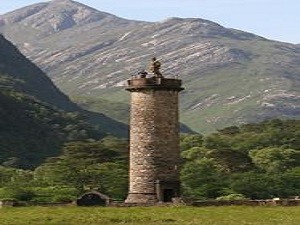
On 16th April 1746 he was finally defeated at Culloden by the Duke of Cumberland. The battle lasted little more than an hour but the massacre which followed lasted until nightfall and for weeks after vicious reprisals were enacted by the Government forces. Several thousand people are reckoned to have been killed, many who had nothing to do with the battle or even the Jacobite cause.
After 5 months of evading capture Charles himself escaped by ship to France.
Although some Highland Clans had assisted Charles, many others did not. This wasn’t a war between Scotland and England and it was not a religious war, it was a final putting to rest of the ideals of Stuart Monarchy which had been rejected by the majority of both Scots and English half a century earlier. It is worth noting that there were more Scots fighting on the Government side at Culloden than on the Jacobite. The lasting effect of Charles’s campaign on the Highlands of Scotland should not be understated. Even though many (most?) Highlanders hadn’t backed his cause, Highland culture, language and dress was supressed for decades to come.
In 1750 Charles actually visited London secretly. He tried for years to interest various European powers in assisting his cause, but to no avail. By the mid-1760’s his claims to the British throne were no longer recognised by the Pope and European powers. In 1788 he finally died having spent almost all his life in exile.
Kings and Queens The Glen Coe Massacre William Wallace Robert Burns and Cutty Sark Robert the Bruce, Sir Walter Scott Clans and Nobles The Loch Ness Monster Bonnie Prince Charlie Famous Scottish Battles Scottish Castles
The Glen Coe Massacre
During 1690 and 1691 the Jacobites had caused the government much trouble and anxiety by their ceaseless plotting to up an insurrection. Lord Tarbet proposed a scheme for the quieting of the Highlands, which Lord Breadalbane offered to carry into execution he was intrusted with a sum of money to distribute among the chiefs, or rather to buy up the claims which Argyle and other superiors had over their feudal vassals, but was then abandoned.
As early as 1501 MacDonalds captured a Campbell castle on an island in Loch Awe and many minor raids followed over the following 150 years, including one in which 30 MacDonalds were caught and hanged in Glen Lyon in 1646 a MacDonald raid into Glen Lyon lled to the deaths of 36 Campbells and Menzies after a wedding. 1685 saw the Atholl Raid, in which Glen Coe MacDonalds laid waste to large parts of Glen Lyon. And in 1689 they burned down Achallader Castle, near Bridge of Orchy in another skirmish with the Campbells.
In August 1691 King William III offered to pardon all the Highland clans who had taken up arms against him in the 1689 Jacobite uprising. These included the Glen Coe MacDonalds. The pardon was conditional on their taking an oath of allegiance to him by 1 January 1692. Clan Chief Alastair MacDonald arrived at Inverlochy (now Fort William) on 31 December 1691, only to find he should have gone instead to Inverary to take his oath. He eventually got there 5 days late! 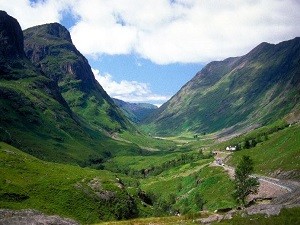
As a result, the Glen Coe MacDonalds did not appear on the list of clans who had taken the oath by the deadline. Worse still for the MacDonalds, the Secretary of State for Scotland, Sir John Dalrymple, wanted to set an example by punishing one of the clans who failed to take the oath. Although some others had made no effort at all to take it, the Glen Coe MacDonalds were selected to set this example because they were unpopular, they had no stronghold, and they lived in a valley whose exits could easily be blocked.
Over the following month troop numbers at Inverlochy (now fort william) were increased. On 1 February, about 130 men moved south from Inverlochy and billeted with the MacDonalds in Glen Coe. The troops were commanded by Captain Robert Campbell of Glen Lyon, a 60 year-old bankrupt alcoholic. He was probably put in charge because he was unlikely to question his orders. These duly arrived in writing, on 12 February, from Major Robert Duncanson based at Inverlochy. Captain Campbell and his men were to “fall upon the Rebels… and putt all to the sword under seventy.” This was to happen at 5am the following morning, 13 February.
There were up to 500 MacDonalds, scattered around the lower reaches of Glen Coe. The start of the massacre was signalled by a fire lit on what is now called Signal Rock at 5am. It was dark and snowing.
The reinforcements intended to block escape routes from the glen failed to turn up, leaving Captain Campbell to make his mark on history largely unaided. The massacre was ineptly carried out. Some 38 MacDonalds were killed by the troops, but the sound of the initial gunfire provide ample warning to most, who escaped into the winter mountains. An unknown number subsequently died from exposure. The public outcry that followed led to the resignation of Sir John Dalrymple.
Glen Coe’s infamy is not really because of the deaths involved. What offended Highlanders most about Glen Coe was the abuse of the hospitality offered by the MacDonalds to the government troops. As a result the massacre of Glen Coe has been transformed by history into something done to the MacDonalds by the Campbells. Certainly the Campbells had every reason to dislike the Glen Coe MacDonalds, and some Campbells were well placed in government and in the military establishment. Also 12 of the 130 soldiers involved in the massacre were Campbells, including their Captain.
In effect the straightforward Campbell vs MacDonald feud, let the Government of the day off the hook, which is perhaps what it intended by putting Captain Campbell in charge and leaving him to get on with it unaided.
Glen Coe had less to do with clan rivalries than it had to do with the government’s continuing efforts to suppress the Highlands and its troublesome residents. The orders for the massacre were signed by a Major in Inverlochy, but the action was authorised all the way up to the Secretary of State for Scotland and beyond, probably to the King himself.
Kings and Queens The Glen Coe Massacre William Wallace Robert Burns and Cutty Sark Robert the Bruce, Sir Walter Scott Clans and Nobles The Loch Ness Monster Bonnie Prince Charlie Famous Scottish Battles Scottish Castles
Robert Burns, Sir Walter Scott and the Cutty Sark
The end of the 18th century has been called Scotland’s most creative period. David Hume won world fame in philosophy and history, Adam Smith in political economy, and Robert Burns in poetry. In the next generation Sir Walter Scott made the land and history of Scotland known throughout the world.
During this period the Scots were also pre-eminent in establishing the fledgling colonies in America, Canada and Australia, along with the odd usefull item like Cutty Sark, this famous ship was launched at Dumbarton on November 22 1869 to be the fastest ship in the race to bring home the first of the new season’s tea from China.
She later brought back wool from Australia and invention like the “television” courtesy of John Logie Baird. From that time on, the history of Scotland merges with that of the rest of the United Kingdom but Scots continued to play a part in world affairs far greater than their numbers might suggest. Legal and education systems did remain separate (and superior) and in the second half of the 20th century many Scots began to demand a greater say in other areas of government. Eventually a new Scottish parliament was established in Edinburgh and it is currently making its mark.
The Old Enemy
You may have heard much about the age-old rivalry between Scotland and England – which apart from 2014’s famous referendum formally ended back in 1707 ! when the parliaments of both nations agreed to the Act of Union. This act merged the parliaments of the two nations and established the Kingdom of Great Britain. Scotland now had free trade with England and the colonies. As Britain’s empire expanded the Scots played a great part in its development. They also shared in the inventions that brought about the Industrial Revolution and in the wealth that flowed into Britain from it.
Officially” A very warm Scottish Welcome
With reference to all past rivalries it should be mentioned that in a recent poll roughguide.com recently published a list of the Friendliest Country’s in the World and Scotland was ranked in the top 10 !
Kings and Queens The Glen Coe Massacre William Wallace Robert Burns and Cutty Sark Robert the Bruce, Sir Walter Scott Clans and Nobles The Loch Ness Monster Bonnie Prince Charlie Famous Scottish Battles Scottish Castles
The Loch Ness Monster
Loch Ness the largest body of Freshwater in Britain over 25 miles long and more than 300 metres deep in part, is home to Scotland’s best kept secret the Loch Ness Monster “Nessie” One of the most discussed and controversial subjects to this day. In 525 AD the first recorded entry of a sighting was made by St. Columba. Modern day sightings ranging from the sensational 1934 R K Wilson “Surgeons” picture…recently suggested to be a hoax, but even more recently indicated to be a hoax theory within a hoax. To the genuine cine film sequences taken by Dick Raynor and Tim Dinsdale in 1960’s. Whatever Dinsdale did film that day convinced him…he gave up his Job and family life to spend the rest of his life (the next 25 years) looking for “Nessie”. There were also others like Roy Mackal and Robert Rhines of the Academy Of Applied Science with underwater images of a possible head, neck and torso in the 1970’s, plus a regular supply of Sonar and Radar readings to this day picking up strong mid-water contacts in the Loch. There are modern everyday people with nothing more obvious to gain except than “loss of respect” ranging from local Policemen, Bank Managers, Businessmen, Fishermen, Aero engineers, Monks and of course tourist’s with eye witness accounts and further photo evidence.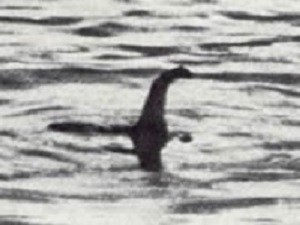
There have also been many hoaxers and show men to add to the confusion. Scientists alike, do not dispute that large creatures are living in the Loch, but cannot say exactly what they are, the Loch is fairly un-productive because of it’s deep dark murky, peaty waters, visibility is virtually zero 3/4 metres down, a number of species of fish, such as Arctic Char “once thought extinct” have adapted to hunting and feeding with out the use of eye sight and amazingly can be found living off plankton and smaller fish up to 100 metres deep in the Loch. Original calculations put the tonnage of fish living in the Loch at around 3 tons, hardly enough to support any larger creature! more recent surveys indicate an actual tonnage of over 25 tons.
“Nessie” The Loch Ness Monster, draw your own conclusions.
Kings and Queens The Glen Coe Massacre William Wallace Robert Burns and Cutty Sark Robert the Bruce, Sir Walter Scott Clans and Nobles The Loch Ness Monster Bonnie Prince Charlie Famous Scottish Battles Scottish Castles
Famous Scottish Battles
The history of Scotland has been shaped on battles with the old enemy listed in numerical order, more information can be found by following this link
This is a list of all major Scottish Battles in date order
Battle of the Standard 1138, Largs 1263, Dunbar 1296,
Stirling Bridge 1297, Falkirk 1298,Loudon Hill 1307,
Bannockburn 1314, Otterburn 1388 , Homildon Hill 1402,
Flodden Harlaw 1411, Killiecrankie 1689, Sherrifmuir 1715,
Prestonpans 1745, Culloden 1746
Kings and Queens The Glen Coe Massacre William Wallace Robert Burns and Cutty Sark Robert the Bruce, Sir Walter Scott Clans and Nobles The Loch Ness Monster Bonnie Prince Charlie Famous Scottish Battles Scottish Castles
Scottish Castles
You can see castles in every region of Scotland from the town and city Centre to Loch side and seaside 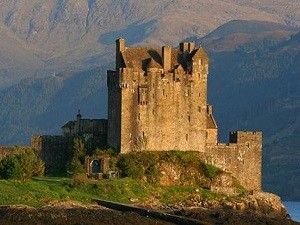
locations. Because of the sometimes turbulent history. Scotland has left a legacy of castles and fortified houses in many parts of the country – particularly in the Scottish Borders and the Highlands. Inevitably, many have been reduced to ruins but what is perhaps surprising is that so many of them still survive as tourist attractions or even as hotels or family homes.
Some of the more well known and popular castles include, Edinburgh, Stirling, Eilean Donan, Dunvegan, Bute, Urquhart, Dunrobin, Mey and of course Balmoral,
